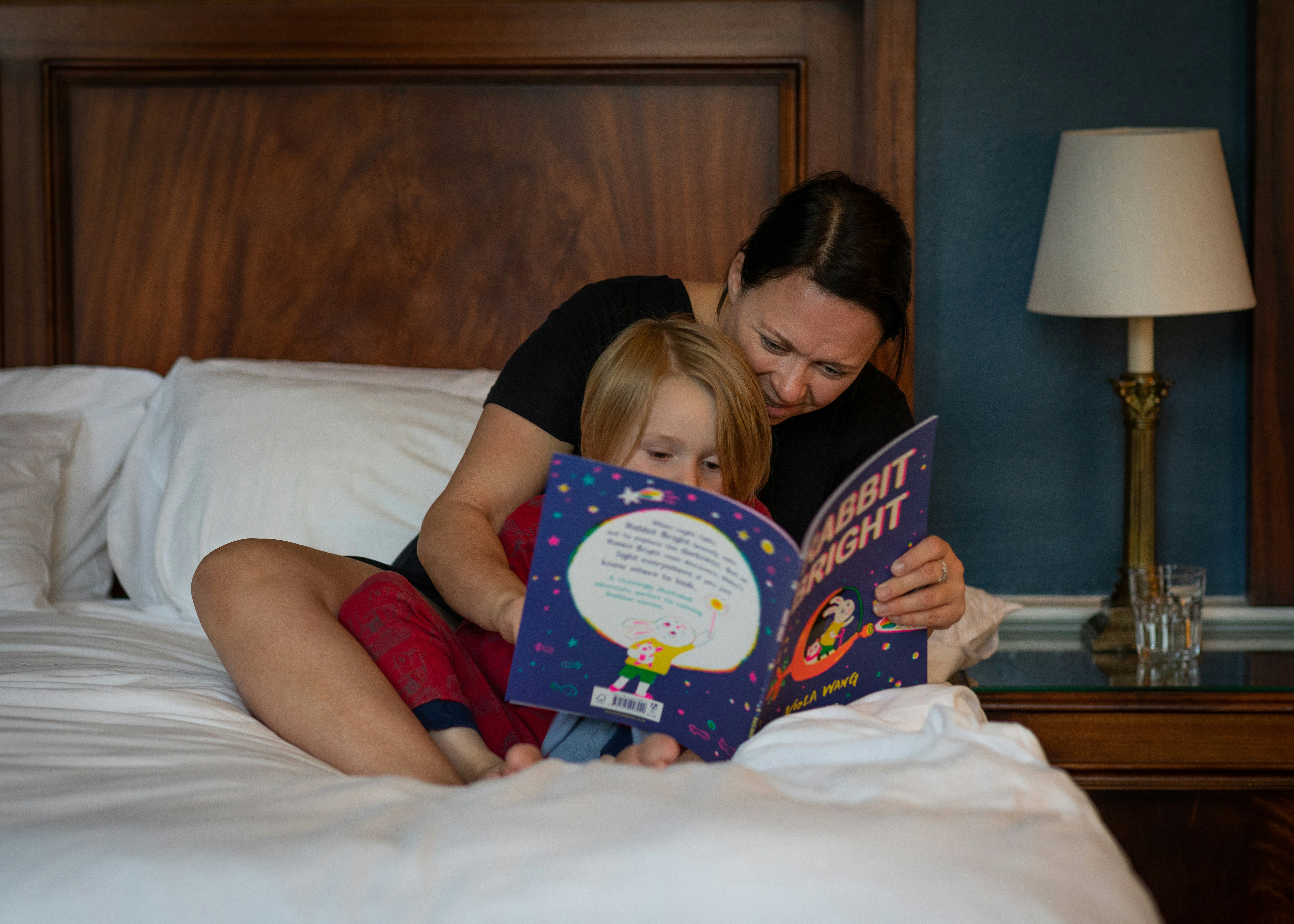Spring Forward: Daylight Savings Guide For Parents

Daylight Savings Guide for Parents — Spring Edition
Whether you have it all figured out — the naps and the bedtimes and the awake windows and the sleep cues — or you’d give anything for some consistency and a full night’s sleep, the Changing of the Clocks can be the death of us or an opportunity we can use to our advantage. We can handle this.
THE TIME CHANGE IS COMING! THE TIME CHANGE IS COMING!

If you have a hard time grasping the impact of changing our clocks twice a year on your family, pull up a seat. We're going to figure this out together.
(As we do twice a year every year 🫠. Head over here for the Fall edition.)
In the spring, the second Sunday in March, Daylight Savings Time begins, and we shift the clocks forward.
In the fall, the first Sunday in November, Standard Time resumes, and we shift the clocks back.
This is a me problem
Let’s just set aside my issue with the language around “Daylight Savings Time.” Daylight doesn’t get SAVED. It gets shifted. And in the fall we shift it BACK to Standard Time.
I won’t bother starting my petition to change the name to Daylight Shifted Time, because I recognize that's a "me problem," and at some point, maybe, we'll abolish this practice. But, government.
A little calendar reality session (Spring 2025 edition)
- Saturday March 8th: Change your clocks one hour forward before you go to bed (eg, change the clock from 9:00 pm to 10:00 pm)
- Sunday March 9th: Continually ask yourself “What time is it? And what time does it FEEL like?”
Your mobile phones and other connected electronic devices will handle this change without you needing to do anything. But your analog watch, wall clock, microwave, and maybe your car will require you to set the time forward by one hour.
Sure sure — sounds simple enough:
- “Spring forward.”
Or
- “We lose an hour. Sunday morning will be fine!”
But I want to know the impact on families:
What will that actually FEEL like?
What will it mean for us as parents and for our kids?
I want to get this out of the way up front: I’m not here to suggest slowly shifting your child’s bedtime over the course of the week for a gradual change. It sounds smart, I guess. And I BET you'd expect that of me. But truthfully, I don’t have it in me to do that for my own family, let alone suggest it for yours.
As always, say it with me: Know yourself, know your kids, know what to do. There is no best way to do things, but if you need some help… the rest of this blog post should help with that.

Let's talk numbers
When we change the clocks in the spring, 🌅 sunrise and 🌄 sunset will be 1 hour later.
That means the daylight hours are shifted to benefit the evening. The sun will set later. We’ll feel more alive in the evening than we have all winter, when it felt like the day is over after dinner. We’re coming out of hibernation.
But that also means the mornings will be darker later. The sun will rise an hour later according to our newly reset clocks.
Example for Bend, OR, Spring 2025
- Saturday March 8 >>> Sunrise 6:03 am >>> Sunset 6:03 pm >>> Daylight hours ~11h34m
- Sunday March 9>>> Sunrise 7:27 am >>> Sunset 7:04 pm >>> Daylight hours ~11h34m
The AMOUNT of daylight is a result of the angle of the earth’s axis in relation to the sun. Nice and smooth:
WHEN the daylight occurs in the course of a 24-day is a result of what time we collectively agree it is. Hence, the hitches in the graph in March and November when we shift the clocks:
So let's suss out what this will actually look like and feel like in our families, starting with mornings

Fundamentals of the Spring time change
We LOSE an hour. In the middle of the night, the clock is jumping ahead an hour, an hour that you don’t get to experience. So if you’re a person who likes sleep and sleeping in, too bad, so sad, you’re getting cheated.
It’s kind of like traveling East one time zone, say, from Chicago to Pittsburgh. When you wake up in the morning, your body feels like it’s still 6 am in Chicago, but the clock in Pittsburgh says it’s 7 am. And at the end of the day, the Pittsburgh clock will say it’s 10 pm, your usual bedtime, but your body feels like it’s only 9.
Q: What if you’ve been wanting to start a morning habit?
A: It’s gonna feel even harder now, because the clock will say 5:00 am, but your body will feel 4:00 am. Gross. If you like making things harder for yourself, go for it. Otherwise, maybe let your body adjust for a week before you dedicate yourself to this ambition.
Q: What if you wake up earlier than you’d prefer?
A: This is me, and I’m not bragging; it’s just my body’s haywire clock. And before you go thinking it’s perimenopause (which very well could be a factor) know that I’ve ALWAYS been too-early-to-rise. The Spring shift is good news for the likes of me because my silly body will be rising to the surface when it thinks it’s 4 am, but voila, it’s 5 am, and I’m good!
Q: What if it's hard to get your kid out of bed in the morning? (That's one of my kids)
A. That’s one of my kids, and the Spring shift is NOT helpful. For example, her Monday morning alarm will go off at 6:00 am, but her body will FEEL like it’s only 5:00 am. She’s getting cheated of an hour of sleep. I’m preparing myself to be extra patient with her Monday morning.
Q: What if your kid is an early riser and wakes up earlier than you'd prefer? (That was me as a kid, and karma and genetics granted me one of these kids.)
A. The Spring shift can help with this child, because when their body springs awake when it feels like 5 am, the newly-shifted clock will read 6 am, which is a little more acceptable.
Now let's look at what all this means for the end of the day

Evenings will be lighter longer. Before the Spring shift the sun sets hereabouts around 6 pm; after the Spring shift, it sets around 7 pm. Wouldn’t it be romantic to celebrate the Spring shift with a family walk after dinner? I like that idea.
Q: What if your kids typically like to stay up late, later than you think is good for them? What if bedtime is difficult and they’re full of resistance?
A. It’s worth emotionally preparing for the likelihood that bedtime on the Sunday of the Spring shift is likely to be harder than usual, because they’re bodies will feel like it’s an hour earlier than the clock says it is. So if they typically object to an 8 pm bedtime, on this day it will FEEL like only 7 pm!
Q: What if your young child typically falls fast asleep* when their head hits the pillow?
A: Well, if their regular bedtime is 7:30, after the Spring shift, when the clock reads 7:30, their body will feel like it’s only 6:30. It’s gonna feel like dinner time, not bedtime. This child won’t quite be ready for bed yet, but they’ll be easier to convince than the bedtime-resister.
Mom-Win: Daylight Savings Tips For Parents

Listen. We’ve survived sleep disrupted by wet beds, sleep issues, sleep regressions, jet lag, nightmares, growing pains, and time changes in the past. We’ll adjust to this one in a few days, too. Here are a few tips that might help:
- Set yourself a reminder for Saturday March 8, 2025, to change your clocks before you go to bed to prepare for the time shift.
- Lower your standards for the week of Sunday March 9th — easier meals, fewer things on the calendar, more naps
- Get the daylight when the gettin’s good!
- Blackout shades can help make bedtime easier. Kind of like putting a towel over the parakeet's cage
- A warm bath before bed to invoke some of those sleepy hormones
- For a lot of people — children and grownups alike — a regular routine with sleep cues can help settle the mind and body to let go of the day
- Screen time / blue light time before bed is known to disrupt sleep; best to avoid it
- Give yourself and your children grace around bedtime and wake-up time
- Do the things — with your mindset and environment — that let you be more patient this week

Thanks for joining me down here in the Daylight Savings Time rabbit hole.
Be sure to check back in when the the Fall shift rolls around!
XOXO
Erika
*Fun fact: “fast asleep” doesn’t mean “quickly asleep,” but rather, “sound asleep,” or “firmly asleep.” Same usage as in “hold fast!”
This post was all about a Springing Forward, a guide to daylight savings for parents. If this meant something to you, you might also like:
Your 4-Step Framework To Make School Mornings More Manageable
7 MORE Strategies for Easier, Calmer School Morning Routines
Enough Good Sleep Will Make Your Mornings Easier (For You And Your Kids!)
If this post helps make your mom-life easier,
subscribe to the weekly-ish newsletter and never miss a post.



